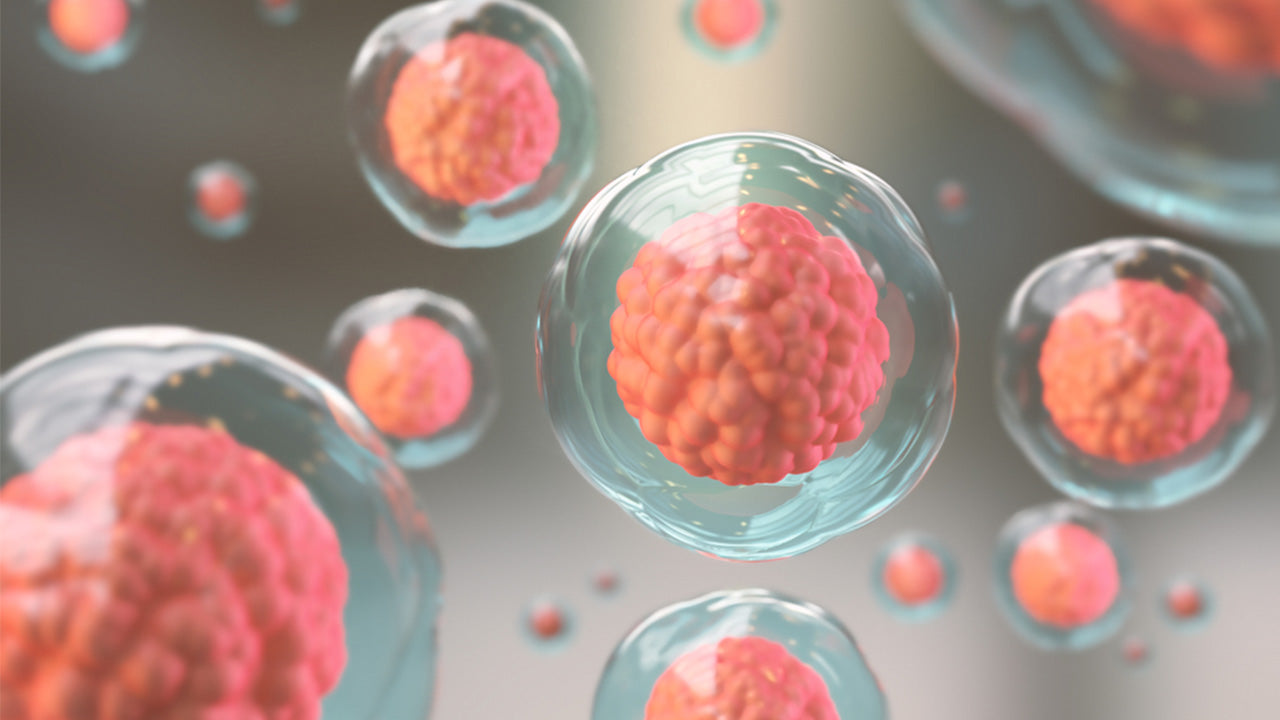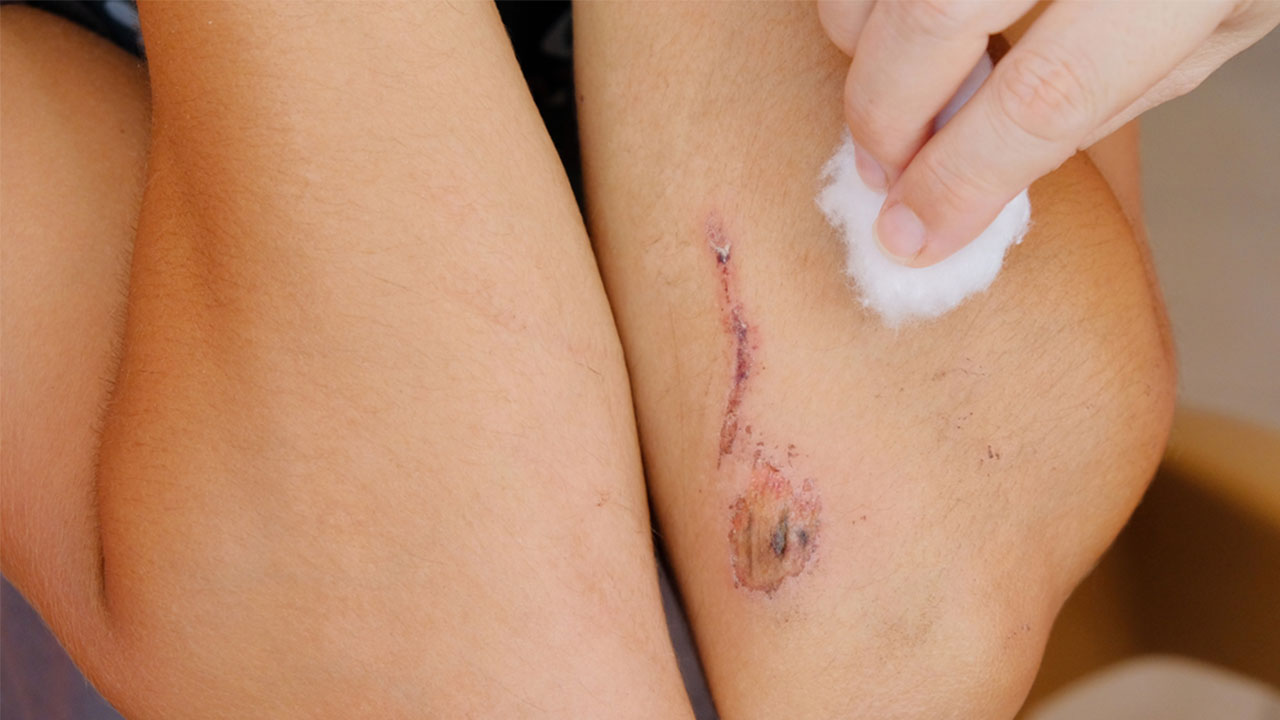Cellular Regeneration: The Minute Mechanics of Healing and Longevity (Plus How to Support Them)
 By: by Amino Science
By: by Amino Science

Regenerative medicine is a branch of research that specializes in tissue engineering and tissue regeneration. It is molecular biology that focuses on restoring and rejuvenating cells, tissues, and organs to help either return or establish normal functioning. Whether this is done in the hopes of wound healing or in an anti-aging effort, the science is microscopic, and yet you can help maintain certain aspects of cellular regeneration. Read on to learn how, plus discover the different types of amazing cellular regeneration that occur throughout the animal kingdom.
The Body's Regenerative Capacity
Your body is regularly engaged in tissue repair and replacement. Muscle cells deplete and are replaced, skin cells are in a constant state of turnover, and the endothelial lining of your blood vessels is regenerated thanks to stem cells produced by your bone marrow (adult mesenchymal stem cells, distinct from embryonic stem cells).
This is not unique to humans. Animal models have shown that creatures such as frogs and salamanders can regenerate whole body parts if they've been damaged, and among invertebrates (animals without spines), flatworm (planarian) regeneration is far more impressive than synthesizing a new salamander limb—flatworms can regenerate their heads or tails if they've been bisected from either end.
Cell regeneration occurs as a reaction to damaged tissue or apoptosis (cell death), and regenerative biology is a complex balance that involves stem cell proliferation and cell dedifferentiation (the process by which a cell changes from one cell type to another by regressing from a specialized cell back into a state more reminiscent of stem cells, and then specializing again to be repurposed).
The science in this area seeks to clarify these operations with the hopes of improving healing outcomes and extending a healthy life indefinitely (maybe even forever).

Cellular Regeneration: The Line Between Fact and Fiction
Science fiction seems too good to be true, but sometimes nature still outperforms imagination. Take the TV series Doctor Who wherein a Time Lord from a distant planet regenerates his (or more recently her) entire body. Real-life creatures are able to do better than the Doctor, regenerating whole body parts that are identical to the ones they're replacing.
Regenerating complex tissue structures has long been an interest of scientists, specifically how to safely influence DNA, RNA, and cell signaling pathways without causing overexpression and possibly cancer formation. We've got the scoop on some of the most fascinating areas of cellular regeneration research.
1. Restoring Life from Death
Scientists are finding that programmed cell death (apoptosis) may be part of what triggers regenerative responses in wound healing and tissue repair. Identifying the local responses at the amputation site of regenerative animals helps scientists understand how such seemingly miraculous regeneration is possible. One long-known example is Hydra.
Hydra is a freshwater polyp from the same family as sea anemones, corals, and jellyfish known as Phylum Cnidaria. In the 1700s, this was the first instance of scientific research in animal regeneration.
Hydra's form consists of endodermal and ectodermal layers divided by an extracellular matrix of neurons and interstitial stem cells that generate neurons and other cell types (such as germ and gland cells). Small pieces of Hydra tissue can regenerate the entire rest of the organism, forming a whole new, symmetrical, and functioning animal.
In studying the different response pathways associated with head and foot regeneration of the organism, many different lines of communication were identified as unique, especially to head regeneration. However, the precise signaling that activates these separate lines of regeneration at the site of injury are yet to be determined, despite hundreds of years of scientific exploration.
Beyond Hydra, other animals also display mechanisms for regeneration, like planarians, Xenopus (aquatic frogs), and newts. Scientists have learned that caspase inhibitors can block the tail regeneration of Xenopus larvae, impeding the apoptosis signaling that is also essential in Hydra regeneration. Nerves fail to reach towards the amputation site, proliferation is inhibited, and while it's still unclear exactly how caspase interrupts this process, the fact that it does helps narrow the scope of research into what causes successful regeneration.
What is clear is that cell death signaling plays a direct role in promoting regeneration and wound healing. In Drosophila (small fruit flies), larval wing discs are able to regenerate fully sized wings after being hit with radiation that kills over 50% of the cells. Apoptosis signaling is also known to factor into liver regeneration in mice (activating what is called the "phoenix rising" pathway). All of these findings help clarify the role that dead and dying cells play in regenerating new life and limb.
2. Creating Spare Parts
The examples of regeneration mentioned above often involve replacing an amputated limb or tissue structure, which requires the production of new cells. That means a great number of undifferentiated cells are dispatched to the injury site. These are known as regeneration blastema, which scientists are still exploring in relation to whether they are pluripotent (able to give rise to all cell types in the body like embryonic stem cells), multipotent (able to differentiate into multiple cell types, but not all, like adult stem cells), or have more limited potential.
These new cells can come from multiple sources, either the transdifferentiation/dedifferentiation of mature cells into stem cell-like precursors, deployment of a resident stem cell population, or the division of terminally differentiated cells (see our article on the Hayflick limit for more information on the limitations of differentiated cell division). Which modes are used depend on the species of lifeform and the tissues within that lifeform that are required.
For example, transdifferentiation and stem cells are both involved in the regeneration of Hydra. Freshwater planarians regenerate via stem cells, specifically mesenchymal stem cells (neoblasts), cells that cause certain repairs and regenerations in humans as well. Injecting fresh neoblasts into planarians that have been lethally irradiated can restore their regenerative capacity.
When speaking of vertebrates, there is still so much that scientists have yet to pin down. For example, plenty of vertebrate tissues have adult stem cells that help maintain homeostasis and tissue turnover, but their role is not exclusive, as other cell types are used in different circumstances. For instance in liver healing and regeneration, liver progenitor cells are the source of new hepatocytes in cases of chronic liver disease, but liver mass restoration after injury or partial hepatectomy is due more to proliferation from the remaining hepatocytes.
In zebrafish, heart regeneration is accomplished via the dedifferentiation of existing cardiomyocytes, which proliferate to create new cardiomyocytes to replace the lost heart tissue mass. In lens regeneration in newts, pigmented epithelial cells create a new lens via transdifferentiation, meaning they first dedifferentiate, then reenter the cell cycle and reemerge as new lens cells. Dedifferentiation also plays a role in appendage regeneration in axolotls and newts (urodele amphibians).
The stem cells present in the skeletal muscles of newts help to contribute to new tissue and muscle fiber creation during the limb regeneration process. For what helps contribute to human muscle fiber regeneration, read on to the final section of this article and learn what scientific understanding of animal regeneration helps teach us about human health and longevity.
3. Getting Some Nerve
For all the cells, signals, and pathways that work perfectly in concert to regenerate whole organisms and tissue structures, the entire operation often relies on having enough nerve. The clearest example is found in amphibians. Experiments have shown that denervated limbs fail to regenerate, proving that regeneration is reliant on sufficient innervation.
Researchers postulate that, since regenerative capabilities crisscross throughout the animal kingdom, there may have been many regenerative mechanisms that were lost to evolution. All of this effort into understanding the development and loss of cellular regeneration abilities feeds the same well: a need to know about the growth factors and molecular mechanisms that control cell fate, guide progenitor cells, and control the regenerative processes of all animal kind.

Tissue Regeneration and Amino Acids
Though human beings cannot regrow identical limbs or whole organs, there are places of regeneration in the human body that can be supported through good health and targeted medicine. One of those areas is liver regeneration and healing. Another is muscle repair and muscle tissue turnover that involves a constant cycle of cell death and cell regeneration. While it would be nice if all our muscle fiber types functioned this way (like the heart which unfortunately must carry the scars it receives), there are ways you can help support tissue regeneration and wound healing in your skeletal muscles—with amino acids!
- Post-exercise support for aged skeletal muscle: This 2017 experiment found that essential amino acid (EAA) supplementation helped amplify skeletal muscle satellite cell proliferation in older men.
- Leucine-enriched recovery: Emphasizing the specific essential amino acid leucine has been proven to help suppress exercise-induced muscle damage markers in the blood of younger men, preventing tissue damage before it occurs. Click here for a leucine-enriched EAA supplement.
- Accelerated wound healing: Evidence shows that dietary supplementation with EAAs helps accelerate wound healing in rat models of undressed wounds, with researchers concluding that this could also be a therapeutic approach in humans as well.
- Collagen deposition: Researchers discovered that a specialized amino acid mixture of arginine, HMB, and glutamine was a safe and effective means of increasing wound repair in humans.
- Limb preservation: Though humans do not have the capacity to regenerate limbs, amino acids have been studied in relation to patients with limb-threatening diabetic foot ulcers. Researchers concluded that the amino acids associated with wound healing in diabetic foot ulcers differ from those reported for traditional traumatic wounds, suggesting a direct diagnostic and therapeutic connection between the two.

Regeneration Research
The topic of cellular regeneration among the animal kingdom is vast and still not perfectly understood. Scientists are spurred to explore farther and deeper than ever to see if what is found among animals might translate to improved human health, healing, and longevity.
Cells with regenerative capabilities and the processes by which these abilities are activated and carried through to a successful result have been studied for centuries of cell biology, but are still not fully understood. What we do know is that the more humans understand the world, the better we are able to adapt to it, and that adaptation means taking advantage of the small regenerative capacity we do have to extend and improve our lives.

Up to 25% off Amino
Shop NowTAGS: anti-aging injury surgery
Join the Community
Comments (0)
Most Craveable Recipes




 833-264-6620
833-264-6620



















